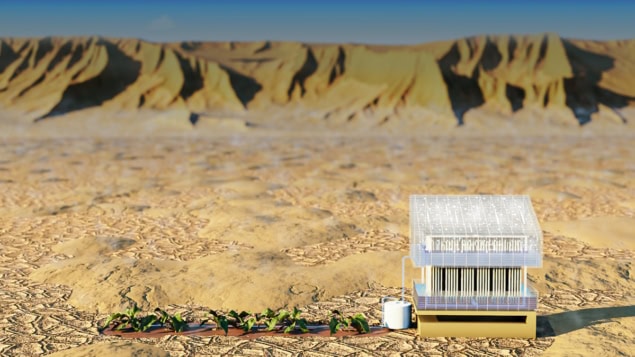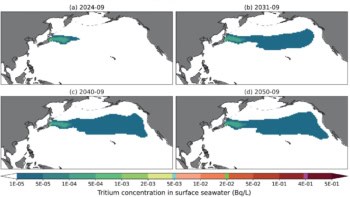
Freshwater scarcity affects 2.2 billion people around the world, especially in arid and remote regions. More work needs to be done to develop new technologies that can provide freshwater in regions where there is a lack of suitable water for drinking and irrigation. Harvesting moisture from the air is one approach that has been trialled over the years with varying degrees of success.
“Water scarcity is one of the major challenges faced by the globe, which is particularly important in Middle East regions. Depending on the local conditions, one needs to identify all possible water sources to get fresh water for our daily use,” explains Qiaoqiang Gan, from King Abdullah University of Science and Technology (KAUST).
Gan and his team have recently developed a solar-driven atmospheric water extraction (SAWE) device that can continuously harvest moisture from the air to supply clean water to people in humid climates.
New development in an existing area
Technologies for harvesting water from the air have been around for many years, but SAWEs have faced various obstacles – one of the main being slow kinetics in the sorbent materials. In SAWEs, the sorbent material first captures moisture from the air. Once saturated, the system is sealed and exposed to sunlight to extract the water.
The slow kinetics means that only one cycle is possible per day with most devices, so they have traditionally worked using a two-stage approach – moisture capture at night and desorption via sunlight during the day. Many systems have low outputs, and require manual switching between cycles, so they cannot provide continuous water harvesting.
This could be about to change, because the system developed by Gan and colleagues can produce water continuously. “We can use the extracted water from the air for irrigation with no need for tap water. This is an attractive technology for regions with humid air but no access to fresh water,” says Gan.
Continuous water production
The SAWE developed at KAUST passively alternates between the two stages and can cycle continuously without human intervention. This was made possible by the inclusion of mass transport bridges (MTBs) that provide a connection between the water capture and water generation mechanisms.
The MTBs comprise vertical microchannels filled with a salt solution to absorb water from the atmosphere. Once saturated, the water-rich salt solution is pulled up via capillary action into an enclosed high-temperature chamber. Here, a solar absorber generates concentrated vapour, which then condenses on the chamber wall, producing freshwater. The concentrated salt solution then diffuses back down the channel to collect more water.
Under 1-sun illumination at 90% relative humidity, a prototype SAWE system with an evaporation area of 3 × 3 cm consistently produced fresh water at a rate of 0.65 L/m2/h. The researchers found that the system could also function in more arid environments with relative humidity as low as 40% and that – in regions with abundant solar irradiance and high humidity – it had a maximum water production potential of 4.6 L/m2 per day.
Scaling up in Saudi Arabia
Following the initial tests, the researchers built a scaled-up system (with an evaporation area of 13.5 × 24 cm) in Thuwal, Saudi Arabia, that was just as affordable and simple to produce as the small-scale prototype. They tested the system over 35 days across two seasons.
“Saudi Arabia launched an aggressive initiative known as Saudi Green Initiative, aiming to plant 10 billion trees in the country. The key challenge is to get fresh water for irrigation,” Gan explains. “Our technology provided a potential solution to address the water needs in suitable regions like the core area near the Red Sea and Arabic Bay, where they have humid air but no sufficient fresh water.”

Solar-powered harvesters could produce clean water for one billion people
The tests in Saudi Arabia showed that the scaled-up system could produce 2–3 L/m2 of freshwater per day during summer and 1–2.8 L/m2 per day during the autumn. The water harvested was also used for off-grid irrigation of Chinese cabbage plants in the local harvesting area, showing its potential for use in remote areas that lack access to large-scale water sources.
Looking ahead, Gan tells Physics World that “we are developing prototypes for the atmospheric water extraction module to irrigate plants and trees, as the water productivity can meet the water needs of many plants in their seeding stage”.
The research is described in Nature Communications.



